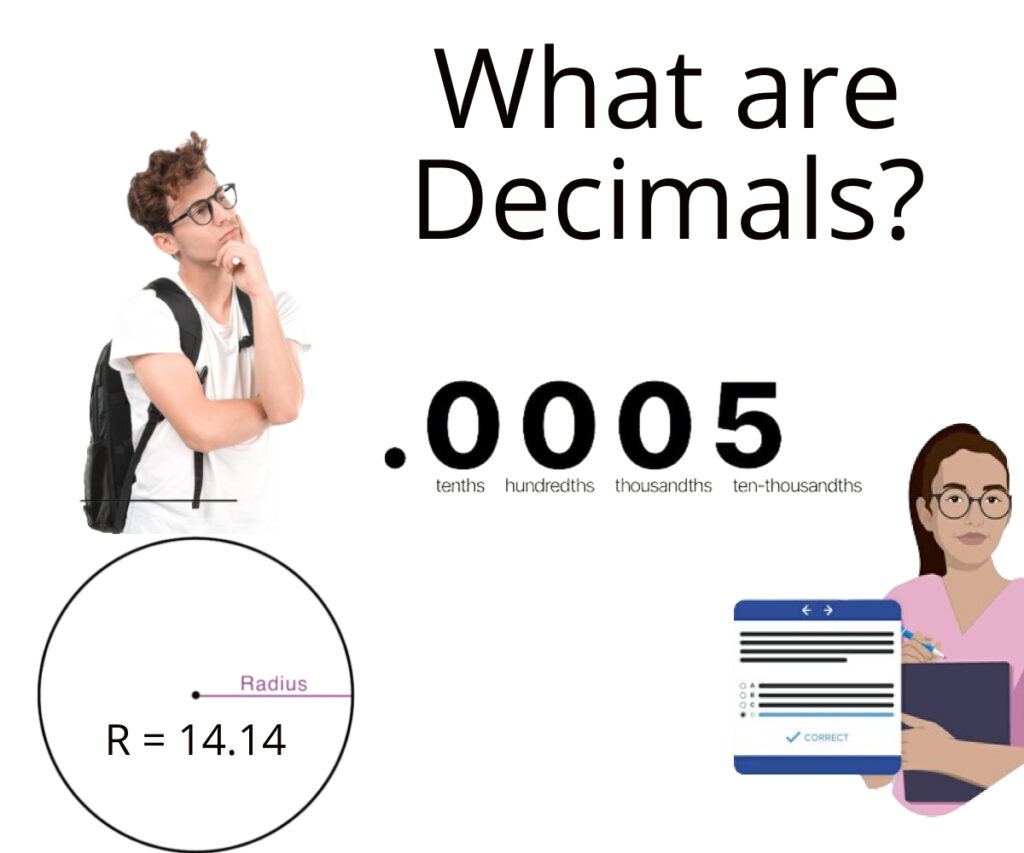Decimals: those seemingly small yet powerful numerical entities that play a significant role in our daily lives. From financial transactions to scientific calculations, decimals are everywhere, quietly influencing our understanding of the world. But what are decimals exactly , and why are they so important? Let’s unravel the mysteries of decimals and explore their significance in the realm of mathematics and beyond.

LearnersCamp serves as a foundational platform for understanding decimals, laying the groundwork for mastering this essential aspect of mathematics. Through structured lessons, interactive exercises, and real-world applications, learners gain a solid understanding of decimal notation, place value, and operations.
What are Decimals?
At its core, a decimal is a way of representing parts of a whole. Unlike whole numbers, which deal with complete units, decimals allow us to express values that fall between these whole numbers. For example, consider the decimal 3.14. Here, “3” represents three whole units, and “.14” represents 14 hundredths, indicating that we have a fraction of a whole number.
The Anatomy of a Decimal
A decimal number consists of two main components: the whole number part and the fractional part, separated by a decimal point. For instance, in the decimal 5.75, “5” is the whole number part, and “.75” is the fractional part. The decimal point acts as a divider, indicating the boundary between these two components.
Understanding Decimal Places
One of the defining features of decimals is their ability to extend infinitely to the right of the decimal point. Each digit to the right of the decimal point represents a different fractional part of the whole, with each position holding a specific value based on powers of ten. For example, in the decimal 0.123, the “1” represents tenths, the “2” represents hundredths, and the “3” represents thousandths.
Applications of Decimals
Decimals find applications in various fields, ranging from finance and engineering to science and everyday calculations. In finance, decimals are indispensable for representing monetary values with precision, facilitating accurate accounting and financial planning. For instance, when calculating interest on a loan, decimals help us determine the exact amount owed or accrued. Engineers rely on decimals for precise measurements and calculations in fields such as construction, manufacturing, and telecommunications. For example, when designing a bridge, engineers use decimals to measure distances and dimensions with accuracy.
Decimal Operations
Just like whole numbers, decimals can undergo mathematical operations such as addition, subtraction, multiplication, and division. For example, let’s consider the following calculation: 3.25 + 1.75. Adding these two decimals yields 5.00, indicating that the sum is 5 when rounded to two decimal places. These operations follow specific rules and algorithms, allowing us to manipulate decimal numbers with ease.
Converting Decimals
Decimals can also be converted into different forms, such as fractions or percentages, depending on the context. Converting decimals to fractions involves expressing the decimal as a ratio of two integers. For example, the decimal 0.75 can be written as the fraction 3/4. Converting decimals to percentages involves multiplying the decimal by 100. For instance, the decimal 0.5 is equivalent to 50%.
Decimal Notation in Real Life
In real-life scenarios, decimals are omnipresent, whether we’re calculating grocery expenses, measuring ingredients for a recipe, or estimating travel distances. For example, when shopping for groceries, we often encounter prices with decimals, such as $3.99 per pound of apples. Decimals provide us with the flexibility to deal with quantities that are not necessarily whole numbers, offering a more nuanced understanding of numerical values.
The Role of Decimals in Problem Solving
Decimals play a crucial role in problem-solving, enabling us to tackle complex mathematical problems with precision and accuracy. Whether it’s calculating the dimensions of a geometric shape, analyzing statistical data, or predicting future trends, decimals serve as essential tools in the mathematician’s arsenal. For instance, when analyzing statistical data, decimals help us interpret percentages, probabilities, and other numerical information with accuracy.
Challenges and Pitfalls
While decimals offer numerous benefits, they can also pose challenges, particularly when dealing with recurring or non-terminating decimals. These decimals require special techniques, such as repeating decimals, which involve identifying and expressing the repeating pattern, or rationalizing denominators to simplify calculations. For example, when dealing with recurring decimals like 0.333…, we must recognize the repeating pattern and express it accordingly, such as 1/3.
Decimals are more than just numbers; they’re versatile tools that empower us to navigate the complexities of the modern world. From basic arithmetic to advanced mathematical concepts, decimals permeate every aspect of our lives, shaping our understanding of quantity, precision, and accuracy. By mastering the principles of decimals, we unlock a world of possibilities, where precision meets practicality, and mathematics becomes a gateway to discovery.




